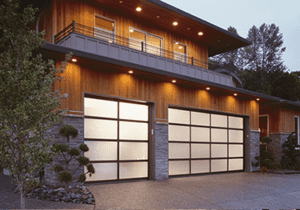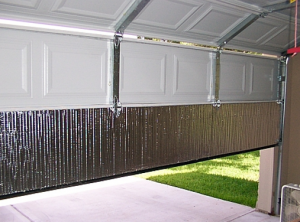It is the territory of the structure development that is upheld by an underlying component, including the dead burden (that is, the weight of the development) and the live burden (that is, any applied burdens). For instance, the feeder gravity load on a story joist would incorporate the uniform floor load (dead and live) applied to the territory of the floor upheld by the individual joist. The primary designer would select a standard shaft or segment model to examine bearing association powers (that is, responses), inside burdens (that is, twisting anxieties, shear stresses, pivotal stresses, and diversion), and solidness of the underlying part or framework (allude to informative supplement A for pillar conditions). Few Garage Doors Brentwood are very famous for rework. The choice of a proper logical model, notwithstanding, is no paltry matter, particularly if the underlying framework leaves fundamentally from customary designing suspicions that depend on the unbending body and versatile conduct. Such takeoffs from conventional presumptions are especially pertinent to the underlying frameworks that involve numerous pieces of a house, however to differing degrees.
Wind elevate powers are created by negative pressures
This is always acting in an outward course from the outside of the rooftop in light of the optimal design of wind streaming over and around the structure. Likewise, with gravity stacks, the impact of wind elevates pressures on a design or get together (that is, rooftop) is broke down by utilizing the ideas of feeder regions and consistently appropriated loads. The significant contrasts between wind elevate and gravity loads are that breeze pressures act opposite to the building surface (typically not toward gravity) and that pressing factors can change as indicated by the size of the feeder zone and its area on the structure, especially with closeness to changes in the calculation (for instance, roof, corners, and edges). Even though the breeze loads are dynamic and exceptionally factor, the planned approach is because of the most extreme static burden (that is, pressure) the same. Vertical powers likewise are made by upsetting responses that outcome from wind furthermore, seismic horizontal burdens following up on the general structure and its parallel power standing up to frameworks (LFRSs). Tremors likewise produce vertical ground movements or increasing velocities that expand the impact of gravity loads; nonetheless, vertical seismic tremor loads are normally certainly tended to in the gravity load investigation of a light-outline building.

The essential loads that produce horizontal powers on structures
These are owing to powers related to the wind, seismic tremor ground movement, floods, soil, and, even though uncommon, typhoon storm flood and waves. Wind and tremor parallel burdens apply to the whole structure. Parallel powers from wind are created by certain breeze pressures on the windward essence of the structure and by negative pressing factors on the leeward substance of the structure, making a joined push-and-pull impact. Seismic parallel powers are produced by a design’s dynamic inertial reaction to ground development which inverts to and from in a sporadic cyclic movement. The greatness of the seismic shear (that is, parallel) load relies upon the force of the ground movement, the building’s mass, and the unique reaction qualities of the structure (that is, damping, pliability, solidness, etc.). For houses and other comparable low-rise structures, a rearranged seismic burden examination utilizes comparable static powers based on basic Newtonian mechanical, with changes following represent inelastic, flexible reaction qualities of different building frameworks. Lifting structures on appropriately planned establishments can limit flood stacks, and trying not to work in a flood plain can dispense with flood loads by and large.
